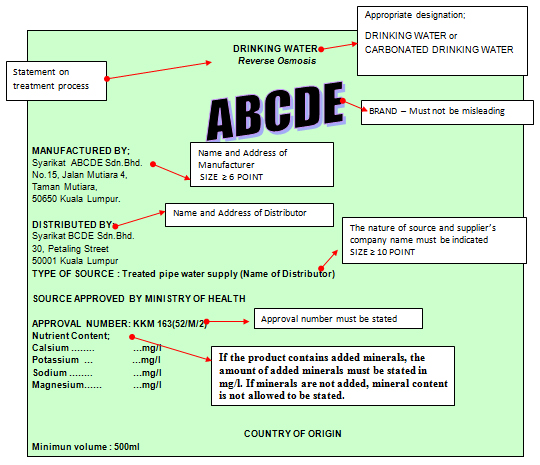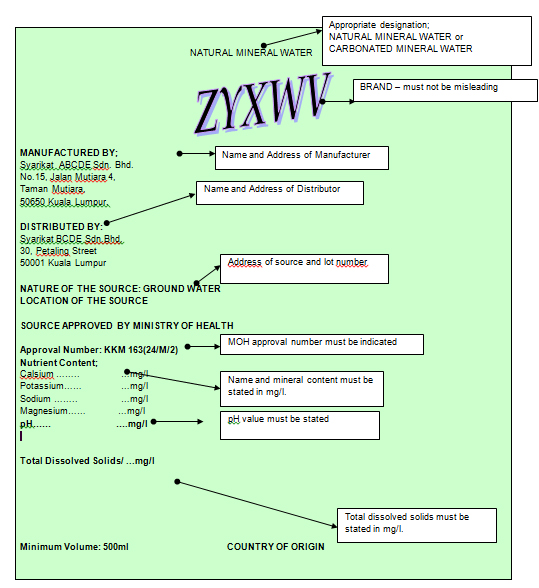Background
The Food Regulations 1985 stipulates that any person who intends to take any Natural Mineral Water (NMW) or Packaged Drinking Water (PDW) for human consumption and trade must obtain a license for the source of the water.
In general, all waters are the same, only the soluble substances such as minerals, contaminants and organic materials in the water are different. These differences depend on the source, treatment method applied and processing.
The following table shows the differences between NMW and PDW.
Difference between Natural Mineral Water and Packaged Drinking Water
| Natural Mineral Water | Packaged Drinking Water | |
|---|---|---|
| Source | Obtained directly from subterranean water bearing strata through a spring, well, bore or other exit. The source must be approved and licensed by the Ministry of Health. |
All water sources which are safe such as from the public water supply system or tap water, surface water (river, pond, and lake) and underground water (tube well, spring). Must obtain approval and license from the Ministry of Health. |
| Mineral fortification | Must not be fortified/enriched with vitamin and mineral. | May contain added chloride, bicarbonate and sulphate salts of calcium, magnesium, potassium and sodium as well as carbon dioxide. |
| Addition of Carbon Dioxide | Allowed | Allowed |
| Treatment | May only be subjected to one or more of the following treatments provided that water or mineral content is not modified or changed in its essential constituents:
Must comply with the specified standard. |
All types of treatments may be applied as long as the standard specified is complied with. Types of treatment for drinking water:
|
| Label | Must be labelled with:
|
Must be labelled with:
|
| Packaging / Bottle | Various coloured bottle cap. Bottle used must be transparent and translucent. |
White coloured bottle cap. Bottle used must be transparent and translucent. |
Questions commonly asked by consumers
Some consumers may be confused by the statement reverse osmosis (RO), RO Water, distilled water and ozonated water. These statements are the types of water treatment processes for PDW. Generally, these treatments are carried out to remove the odor, taste, organic contaminants and chlorine. Treatments such as distillation and reverse osmosis are carried out to remove or reduce minerals whereas ozone is used to kill germs (sterilisation).
Advice to consumers
Consumers must know the difference between natural mineral water and packaged drinking water. The easiest way to distinguish both types of water is to read the labels and look at the bottle cap: White cap for packaged drinking water and other colors for natural mineral water.
EXAMPLE OF PACKAGED DRINKING WATER LABEL

EXAMPLE OF NATURAL MINERAL WATER LABEL

| Last reviewed | : | 3 April 2014 |
| Writer | : | Pn. Norrani binti Eksan |
| Reviewer | : | Pn. Norrani binti Eksan |







